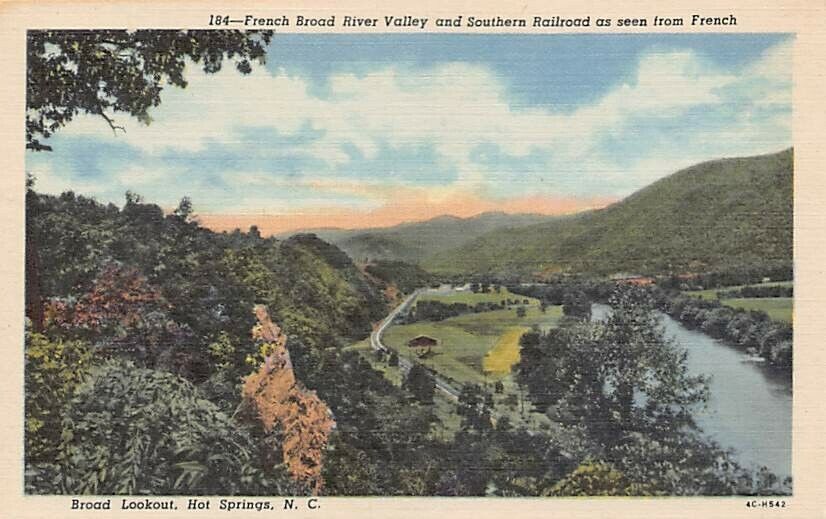
One of the World’s Longest Continuously Marked Footpaths
The Appalachian Trail is one of the longest continuously marked footpaths in the world, measuring approximately 2,185 miles in length. The legendary footpath travels through wild places, rural communities of America, and on the edge of one of the most populated areas in America. Its close proximity to the masses and hundreds of access points invite more than 2 million visitors a year. The Appalachian National Scenic Trail (AT) was completed in 1937 and is a unit of the National Park System. It is managed under a unique public-private partnership that includes, among others, the National Park Service (NPS), the US Forest Service (USFS), an array of state agencies, the Appalachian Trail Conservancy (ATC), and most importantly, 31 local Trail maintaining clubs. Volunteers from the Carolina Mountain Club maintain the AT through and around Hot Springs.
Over 2,000 Thru-Hikers Attempt It Each Year
About 2,000 hikers attempt to “thru-hike” the Trail, covering all 2,190 miles in one calendar year. People from across the globe are drawn to the AT for a variety of reasons: to reconnect with nature, to escape the stress of city life, to meet new people, deepen old friendships, or to experience a simpler life. The majority of hikers start in Springer Mountain, Georgia and head north. They are known as northbounders. A much lesser number head south starting in Katahdin, Maine and are called southbounders.
Travels Through 14 States
The Trail travels through 14 states along the crests and valleys of the Appalachian Mountain Range from the southern terminus at Springer Mountain, Georgia, to the Trail’s northern terminus at Katahdin, Maine. Along the way, it crosses through 6 national parks and 8 national forests, as well as dozens of state parks, forests and game lands. The 250,000-acre land base, referred to as the AT corridor, is arguably the most significant conservation corridor along the East Coast. Trail lands anchor the nation’s eastern forest block, which provides both ecological and economic benefits to the 300 jurisdictions traversed by the Trail, and beyond. Forests along the Trail protect the source waters for approximately 1/3 of the East Coast’s water supply, including headwaters of 64 major watersheds and nearly 1,800 water bodies.

Hot Springs is 273.9 Miles from Springer Mountain
Hot Springs is 273.9 miles from the southern portion of the Trail at Springer Mountain, Georgia. The AT enters North Carolina at the Georgia border, then climbs Standing Indian Mountain and crosses the Nantahala River before winding through the lush Nantahala National Forest. Before reaching the Great Smoky Mountains, it rises into the Stecoah-Cheoah Mountain area. It bisects the Great Smoky Mountains National Park along the North Carolina-Tennessee border, which it follows on its way to the town of Hot Springs, NC. Elevations vary from 1,725 to 5,498 feet along the North Carolina segment of the Trail.
Hot Springs – North Carolina’s AT Town
Hot Springs, NC the only town in North Carolina where the Appalachian Trail travels directly through town. From the south, the Trail enters the edge of town from the base of Deer Park Mountain and literally runs down the main street for about a mile before climbing out of the river valley up Lover’s Leap Mountain. The Trail in town is marked with handsome granite markers bearing the AT logo which are embedded in the sidewalk.
Hot Springs welcomes over 2,000 through-hikers annually, mostly between March and May as the thru-hikers head north to Maine. Thru-hikers typically stay in town for a couple of days to rest, re-provision, do laundry, eat a good meal and enjoy a cold beverage. During the Fall, town sees smaller groups of hearty southbound thru-hikers nearing their goal of Springer Mountain, Georgia. Learn more about services in town by reading our AT Hikers Resource Guide.
Many Businesses Cater to Hikers
Many of the businesses in town cater to hikers during the spring of the year as the influx of hikers head north to Maine. These same businesses provide services to section hikers and day-hikers throughout the year. Hot Springs, NC has great outfitters shops, shuttle services, hostels, relatively inexpensive lodging, and a number of casual dining options with cold beer and wine.
Section Hikers or Weekend Warriors
With the AT running right through town, it’s no wonder that we are recognized as a hiking mecca. While the AT is the best known hiking trail in town, there are many other hikes in the area that are equally beautiful, fun and of various degrees of difficulty. A variety of people come here to hike a specific section of the AT, or one of the other beautiful trails in the Pisgah National Forest.
Hot Springs and the Appalachian Trail Conservancy
The Appalachian Trail is obviously an important factor for the Town of Hot Springs. The town leaders, citizens and the tourism association all work closely with the Appalachian Trail Conservancy (ATC). In 2006, a community forum comprised of 115 community members and the ATC met to begin a conversation on how we could best work together. “The resounding result of the forum placed an emphasis on working with the town and County to ensure that ordinances and land-use planning regulations do not negatively impact the A.T. As part of the 10-year visioning meeting for the comprehensive plan, community members voiced a need to create an A.T. information center and museum, historic preservation, green space protection, and land-use planning that takes the surrounding forests and farms into consideration.” Appalachian Trail Conservancy.
Hot Springs is the featured trail community in the official magazine of the Appalachian Trail Conservancy, A.T. Journeys, in the Summer 2019 Edition.

